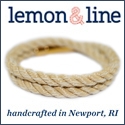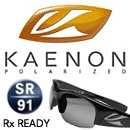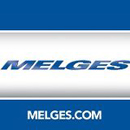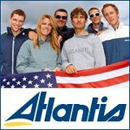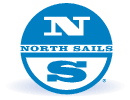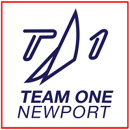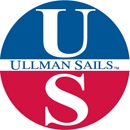Scuttlebutt: Volvo 70 Keel Fairing System
Russ Bowler of Farr Yacht Design Explains
The fairing system developed by Farr Yacht Design for the Volvo Open 70 keels has been the source of considerable interest for those following the Volvo Ocean Race. The following describes the system, why it is required and what has gone right and what has gone wrong.
The VO70 Rule allows the designer to place the hinge axis for the canting keel up to a maximum of 150mm above the hull surface. The higher position for the axis is attractive to the designer because this provides a longer lever arm for the keel and moves the bulb further to windward. The downside is that at the surface of the hull a large opening is required to accommodate the keel fin swinging through an arc. The challenge is to fair this opening while respecting the “no hollows” requirements of the VO70 Rule, and in particular Rule 2.2.1 which requires that no point in any transverse section be lower than any point nearer the centerline.
The team at Farr Yacht Design developed a system to fair over the required opening in the hull with a sliding plate. The plate moves with the keel by way of a barrel that slides vertically on the fin as it cants. The plate, which extends fore and aft of the fin, is retained with two “wedges” that fit full length of the sliding plate into a recess in the hull. This system offered a fair geometry for the water flow around the keel fin in the search of the least drag at all angles of cant.

Recognizing that this system has several moving parts, that it would be subjected to wave slamming and pressure peaks from the water flow around the keel, and is difficult to access, we sized all components conservatively.
All four of our Volvo Open 70 programs were provided with the same drawing details. Each builder went about building the fairing system, in some cases making modifications to suit their construction techniques.
Movistar was our first Volvo Open 70 to be launched and completed over 22,000 miles of hard sailing (including a new 24 hour mono hull record in the Southern Ocean). Ericsson and Brasil 1 were next and also completed several thousand miles of sailing without any major issues.
The first mishap was on Pirates on the first night of the race. The starboard wedge was torn out of the boat leaving the leading edge of the sliding plate exposed to the 30+ knot water flow. From the remaining wedge there were indications that they may not have been built or installed to plan. We recommended a more robust wedge be built; the fastening and bonding upgraded and added a protective covering laminate on the leading edge. Since this work was completed, the system on Pirates has performed well. From inspecting the boat in Melbourne, I can report it appeared in good working order. The same information to upgrade the wedges and installation was issued to all our boats in the race.
Second mishap was on Movistar which lost a piece of the starboard wedge on their way to winning Leg 3. Quick repairs were undertaken in the available 48 hours in Wellington. These repairs held up for 3000 miles but the rigors of the Southern Ocean proved too much and the wedges again came away at high speed causing the sliding plates to direct a powerful stream of water into the wet box. The Movistar team is presently building new wedges to install to the same details used on Pirates, with an additional stainless steel cover strip on the leading edge for added security. Our other teams will be offered the same modification but they probably won’t action any changes given that they have no problems with their installations
Alongside these events the same keel fairing systems on Brasil 1 and Ericsson have sailed through the worst conditions the race has to offer without incident.
So what can we learn from these unfortunate events:
1. We are reminded of the principle that when designing something that has not been done before, it is important not only to consider the absolutely worst possible event but also the consequences of failures from that event. In this case if the front end of the plate lost its retaining devices through unexpected events such as material defect, improper installation, damage from impact or the like, what would be the consequences? Risk management is a part of the design process. Efforts should be made to provide a fail-safe method of retaining the plates, or a back up retention device that would keep the plates from forming scoops for the oncoming water flow.
2. While the speed and slamming events were expected, our design team, builders, shore crews and sailors have a new respect for the violent slamming and pressure peaks that occur around the keel area in these ultra high performance ocean sailing boats traveling in rough water at speeds up to 40 knots.
3. The best efforts of design and build in project can be completely ruined by the smallest detail. There are many cases of this in the engineering world. Slamming pressures and design loads are applied to the design of all details, but the actual loadings to small areas around the foils when a boat traveling at 35 knots plus lands on a wave at the wrong angle can peak to what could be higher pressures than predicted by traditional methods.
While the exercise of designing and building these fairing systems was time consuming, and dealing with the problems they presented utterly frustrating, similar fairing systems may play a role in the development of high performance canting keel ocean racing yachts in the years to come. It is humiliating that this system has been the cause of such upsetting consequences to two great competitors in this race. In the future we will certainly be reviewing their necessity and approaching their design with all the wisdom this experience has given us. - Russ Bowler, Farr Yacht Design
|




